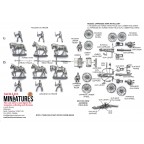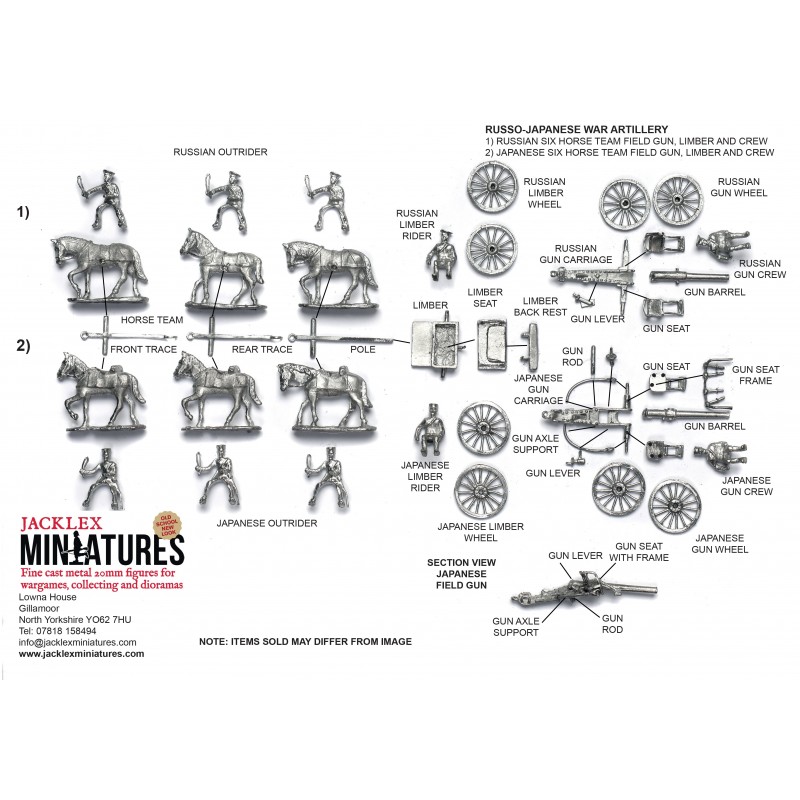This product is sold as an unpainted kit. It is accompanied by an Instruction Sheet. The Russian gun used is also available as CE 100.
Additional Images.
1. Instruction Sheet
2. Russian field guns deployed for firing during the Russo-Japanese War.
THE RUSSIAN 76.2 mm FIELD GUN
In the latter part of the Nineteenth Century the Russian Army had considered designs for a new field gun from Krupp, Shamona and Schneider companies but in 1898 chose the gun developed by engineers from the Putilov St. Petersburg factories. The 76.2 mm (3”) gun model M1900 was introduced for the start of the Russo-Japanese War but by war end had been entirely replaced by the improved Putilov M1902 version. This gun was used for the first time at the battle of Telissu, June 1904. Both variants of the gun were light quick-firing field guns which were generally superior in range and rate of fire to the Japanese Type 31 75mm gun, despite the initial problems with poor crew training and lack of senior command experience on the introduction of the M1902 field gun.
The gun was the first Russian gun with a rather special recoil recuperation system, the barrel being linked to a sliding beam and brake system incorporated into the trail. The gun also had a precision sight for direct and indirect fire, quick action breech similar to the Schneider mechanism and single-piece ammunition loading. Its effective range was approximately 7,500m with a maximum range of 8,500m. Early versions had two seats for the crew on both sides of the barrel. These were replaced in after the war with an armoured shield. The gun could fire shrapnel and canister ammunition as well as more specialised types of projectiles. The limber could carry 40-44 rounds in a light artillery unit.
THE WARGAMER. I would suggest that, although there are technical and training differences between Russian and Japanese artillery, the fundamentals are very similar and therefore there is no need to differentiate between the sides on the wargame table. I always like to limit ammunition in my battles represented by the use of a small D6 next to the gun or limber. Re-supply being possible but at the loss of time and fire power. This mechanism I find prevents lots of long-range fire and forces the wargamer to think a little more carefully about how he might use his artillery resources.







